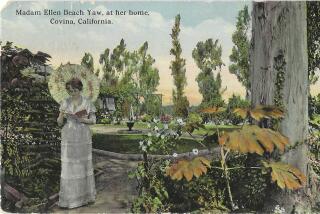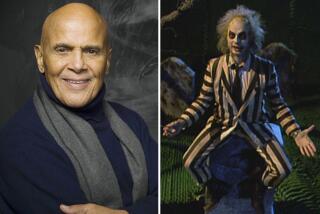Lena Horne’s MGM Vocals a Study in Stylish Singing : LENA HORNE: “Lena Horne at Metro-Goldwyn-Mayer” Turner/Rhino ****
- Share via
Even if you don’t know Horne’s history, this is an engaging collection of wonderfully stylish movie vocals.
Among the 23 numbers performed by the elegant singer: Harold Arlen-E.Y. “Yip” Harburg’s witty “Ain’t It the Truth” (which was recorded for, but not used in, 1943’s “Cabin in the Sky”) and Johnny S. Black’s wistful “Paper Doll” (from 1944’s “Two Girls and a Sailor”) as well as Richard Rodgers-Lorenz Hart’s sophisticated gems “Where or When” and “The Lady Is a Tramp” (both from 1948’s “Words and Music”).
However, the album, which brings together Horne’s MGM material for the first time, is even more rewarding when you consider the circumstances under which the music was recorded.
Born in Brooklyn in 1917, Horne was the first African American performer to sign a long-term screen contract with a major Hollywood studio, and the studio’s use of the singer-actress was compromised.
Horne was even reluctant to sign with the studio, she notes in a foreword to the album booklet, because she didn’t like the roles African Americans were forced to play at the time.
Except for her role as Georgia Brown in “Cabin in the Sky,” Horne was mainly limited to cameo appearances. “I never considered myself a movie star,” she once said. “Mostly, I just sang in other people’s movies.”
In fact, Horne’s scenes were often isolated from the rest of the action so that exhibitors in Southern states could remove them.
Will Friedwald--author of “Sinatra! The Song Is You,” the recent and acclaimed critical appraisal of the singer--supplies the background in a lengthy appreciation in the album’s accompanying booklet.
Don’t, however, look for Horne’s most famous number, “Stormy Weather.” She recorded that song for the 1943 movie of the same name while on loan from MGM to 20th Century Fox. Turner/Rhino also has just released the “Cabin in the Sky” soundtrack in a separate album.
*
New albums are rated on a scale of one star (poor), two stars (fair), three stars (good) and four stars (excellent).
More to Read
The biggest entertainment stories
Get our big stories about Hollywood, film, television, music, arts, culture and more right in your inbox as soon as they publish.
You may occasionally receive promotional content from the Los Angeles Times.










